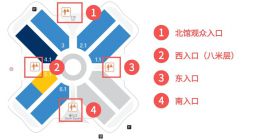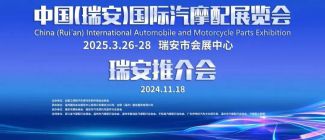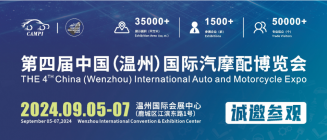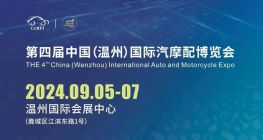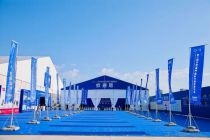Scan QRCode

Time always flies by. In a twinkling of an eye, half of 2025 will have passed. Looking back over the past 180 days, we quickly climbed over the memory fragments of the first half of the year: involution and anti involution, participation in the price war while calling a halt, Huawei Xiaomi's strong sweep, intelligent driving from the whole people to cooling down, joint venture singing bad and ushering in the counter offensive, state subsidies to stimulate the car market and overdraft car market
How should we summarize and think in stages between major events, core trends and repeated horizontal jumps? In the face of the uncertain market in the second half of the year, what path will China's auto market follow?
As early as a month ago, some friends and customers in the circle were discussing with us about the half year of China's car market in 2025. In fact, there are two dimensions. One is data.
The data level is naturally good-looking. According to the data released by the passenger Federation, 10.901 million passenger cars were retailed in the first half of this year, an increase of 10.8% year on year. In the past six months, except for the 12% decline in January due to the high base in the same period last year, the car market has maintained a good growth rate in the five months from February to June, which has been maintained in the range of 13% to 20%.
On the head of specific auto enterprises, both the first few independent auto enterprises and the existing new power auto enterprises have basically achieved good sales and growth. The bullish trend makes enterprises have a lot of hope for future development. Including the mainstream joint ventures, although the sales data showed a slight decline, the good news is that some brands represented by Volkswagen, Toyota and Nissan, and their classic models, such as Langley, Xuanyi, Passat, Camry and CR-V, are still at the top of the list of major models, even though they have been abused thousands of times in the comparison PK with many new energy products.
With the support of specific sales and growth, the passenger car market seems to be booming. However, in the hearts of the vast majority of Autobots, no matter how good the data performance, it is difficult to hide the negative emotional words such as "volume, difficulty, hardship...", which form a strong contrast with it. This contrast, of course, also includes the industry profit as low as 4.3%, and the total profit of the automotive industry, which fell by about 12% in the first five months.
Perhaps people in the automotive industry have long been used to the taste of "half is sea water, half is fire", and understand the ups and downs of the industry law that is hard to resist. All difficulties and hardships have turned into the word "living" and are waiting for the dawn.
China's auto industry has been struggling with internal convolution for a long time. In the past two years, executives of several leading auto companies have said on many public occasions that they would strongly oppose internal convolution.
Since July 30 last year, the national level proposed for the first time at the Politburo meeting that "we should strengthen industry self-discipline and prevent involutory vicious competition", throwing the anti involution out of the water. After that, the official media came out and released the voice to the greatest extent in the first half of this year.
What is involution? In fact, it can be summarized in several aspects: for example, the disordered price war has become normalized, the price reduction and frequency have reached a record, leading to the chaos of the industry price system and the trust crisis of some brand consumers; For example, due to the deterioration of the supply chain ecology, some enterprises use the reason of prolonging the accounting period to finance in disguise, shifting the cost to the upstream, causing quality risks.
For example, the homogenization of products is becoming more and more intense, and the differentiation is gradually disappearing, whether in appearance design or technology application; For example, R&D investment is short-term, and technological innovation is insufficient. Instead, it is replaced by marketing, forming a malicious marketing and network Navy ecology; For example, the inventory is too high, the turnover is deteriorating, the dealers are suffering, and the capacity utilization rate of car enterprises is declining; For example, the monopoly of the head, the deterioration of the living environment of small and medium-sized enterprises, the shrinkage of user services, and the difficulty in safeguarding rights have led to the fragmentation of the experience
In particular, the new forces of car manufacturing and independent head car companies have played a "leading" role in the process of involution. As yintongyue, chairman of the board of automotive, said at the 2025 China Automotive forum a few days ago, Chery has been involved in the price war, also involved in the involution, and followed others to do bad things
In fact, to break the involution, you should know why it happened? The author believes that the essence of China's auto involution is the systematic imbalance under the joint action of market mechanism, policy guidance, technology evolution and industrial ecology.
The Chinese market is large enough and the demand is diversified enough. With the transformation of new energy vehicles and the reduction of the threshold for making cars, it is very easy for both new entrants and traditional players to build a car. Coupled with policy incentives, market expansion has become irrational.
The second is the transformation of automobile consumption from the incremental market to the stock market, which led to the mismatch between supply and demand in the market and triggered a series of crises of overcapacity. In order to obtain a larger market share, leading enterprises have to rely on the scale effect, and then move their minds from the price. The forces of new car building, on the other hand, have made efforts from the so-called technology, using smart cabin and smart drive to create a demand and ability, and accelerate the involution.
In addition, many enterprises are lack of business ethics and business civilization. There is some imbalance between the regulatory and legal aspects in the balance of China's automobile management and development. The red line problems of some automobile enterprises have not been solved in time, leading to the problem becoming more and more serious. So since last year, even though the state and various ministries and commissions have repeatedly called for opposition to the internal roll, those who should reduce the price are still reducing the price, and those who should continue to do so.
Fortunately, behind the Chinese market, there is a pair of invisible hands that play a regulatory role. The major automobile enterprises collectively announced the 60 day account, and later the Ministry of industry and information technology set up a report window on the "60 day account period", at least to suppress the "arrogance" of the insider.
Will the Chinese market continue to roll inward in the second half of the year? The author believes that although the atmosphere of involution has changed after a series of rectification, the fundamental elements of involution at the market level and the enterprise level have not changed, that is to say, the price war will not stop in the second half of the year, and the covert involution will continue.
As Li Shufu, chairman of Geely motor, said during the two sessions of the National People's Congress this year, the price war will continue until the winner is the king. When the price war stops, the inner roll will stop.
For a time, it was believed that Tesla, which entered the Chinese market in 2018, was a catfish for the development of China's new energy market. Facts have proved that this catfish has played a positive role in promoting the rapid growth of the Chinese market, especially at the driving level of the domestic supply chain, and has indeed provided fertile ground for the development of China's new energy.
But now there is a catfish bigger than Tesla in the Chinese market, that is, the entry of Huawei/Xiaomi has brought the competitive ecology of Chinese cars to another highland.
Let's start with Huawei. Although it has repeatedly said that it does not build cars, its involvement in the automotive industry has long gone beyond the scope of building cars. On the one hand, with its capabilities in new energy technology and intelligence, Huawei has been deeply involved in the market competition among major car companies as a supplier, especially in the empowerment of intelligent cockpit and intelligent driving for some car companies, such as deep blue, avita and lantu, and has seen the market effect.
But what will happen if this road is further developed? All of us are Hongmeng cockpit and Huawei ads intelligent driving. Finally, the intelligent ability of different brands will be leveled. The day that "all vehicles are Huawei is equal to no Huawei" will come sooner or later.
On the other hand, Hongmeng Zhixing, a smart car selection model, has fully opened up the five realms of inquiry, intelligence, enjoyment, respect and fashion. Huawei has extended the claw of car manufacturing to the market from 150000 yuan to 1million yuan, covering cars, SUVs to MPVS, pure electricity to extended range products.
Up to now, the earliest rising market has made real progress in the high-end SUV market and even has the right to speak for high-end large SUVs by virtue of M9, which sells 15000 vehicles a month, and M8, which sells 22000 vehicles a month and ranks among the top three in the SUV market. Another example is zunjie, the grand order of more than 5000, and the weekly order of nearly 1000 units. Such achievements have far exceeded the market performance of Mercedes Benz S-class.
Obviously, the group of Post-70s and post-80s users of Huawei's brand, who are in line with Huawei's mobile phones, will become the core element of Huawei's smart choice of vehicles to kill all quarters, whether it's purchasing power or personal voice.
However, Huawei's performance in the intelligent and enjoyment sectors, including the future Shangjie, has yet to be tested by the market. On the one hand, the market competition is more brutal, on the other hand, it is the trade-off between the interests of partners, and even the appeal of Huawei's brand in the 150000-300000 yuan market, which will be determined by the final product strength and marketing power.
Besides Huawei, Xiaomi should be one of the most popular brands in the automotive industry. Xiaomi su7 has surpassed Tesla Model 3 in all respects, which means that a gap has been drawn between rookies and old money.
Xiaomi's hot sales are indeed phenomenal. In particular, the stunning number of orders for yu7's listing this year has made everyone envious. Why can Xiaomi achieve this state? The author believes that there are two core factors that promote Xiaomi yu7 to achieve such achievements.
One is Lei Jun's influence. Previous research reports showed that 95% of people who bought Xiaomi cars said Lei Jun's personal charm had a positive effect on their purchase. Of course, there is also the continuous penetration of Xiaomi into users over the years. After all, hundreds of millions of daily living users, this huge funnel opening, provide a steady stream of potential customers for Xiaomi automobile.
The second is the opportunity to rely on China's new energy industry chain, technology accumulation and talent cultivation, which is becoming the most direct expression of Xiaomi's product power.
However, Huawei and Xiaomi, the two largest consumer electronics enterprises, will definitely bring revolutionary changes to the industry when they enter the new energy track. First of all, in terms of product definition, smart cabin and smart drive have been raised to an unprecedented level. Even in the cultivation of consumers' cognition of smart cars, their influence has far exceeded the three major parts of cars. Even now, many people do not understand the boundaries of Zhijia and pave the way for Zhijia with blood and life.
The second is the change in the level of automobile marketing. Analyzing Lei Jun's speech frame by frame, the saturated marketing method and the system operation of ecological synergy have become the new means of automobile marketing competition in the future. The war of words between "seal" and "meter monkey" on the Internet is bound to affect the minds of consumers and make many consumers' minds fall into confusion, including but not limited to all kinds of weekly lists, lists and hot searches of sesame seeds.
BYD Geely Chery Chang'an eats half of the country?
The core driving force for the growth of China's auto market in the past two years is undoubtedly from its own brands. Looking at the monthly sales volume of auto enterprises, the sales volume and growth point are basically concentrated on the self owned brands. Of course, the largest contribution is made by several self owned auto enterprises, such as BYD, Geely, Chery, Chang'an, etc.
These leading car companies put new energy products at the core of their strategy, seize the market through intensive new product launch, and grow faster with the help of the new energy sector.
BYD currently has more than 40 models in two channels, including more than 50 models including equation leopard, Tengshi and yangwang. The huge car sea strategy, various product forms and airtight product layout basically cut the price of 10000-20000 yuan for a car.
Large scale sales and the vertical integration ability of its supply chain give BYD a very strong price power. From 99800 yuan to 79800 yuan in the past, BYD has become the favorite of the market, and has also got rid of its competitors. In particular, BYD's monthly sales volume reached the peak of 500000 vehicles, with strong policy impetus and consistent preference of Chinese consumers for cheap and fuel-efficient vehicles.
But since this year, BYD's pace has been hovering at the monthly sales of more than 300000 vehicles, and it can't go back to the time of 4.5 million vehicles. The core reason is that the whole system has indeed covered up many problems in the past two years. Once the competition in the market environment deteriorates, these problems will gradually show up, including the product level and the relationship between dealers' partners and upstream and downstream suppliers. This is also one of the reasons why BYD has become the target of attack since last year.
No one can always lead the market. BYD's strategy has been imitated by several followers. Feeling BYD across the river has also become an important factor in this round of sales growth of Chinese brands. Of course, there is no problem with this. It is also a common operation in the business world for predecessors to explore the way and rush forward.
In particular, the independent head car companies represented by Geely are basically aiming at BYD. What kind of car does BYD have? There must be similar cars in Geely system. But the premise is that the quality of Geely's cars must be better than BYD's, and the price is more competitive than BYD's, which is also in line with the business logic and development law.
A typical representative is the comparison between Geely Xingyao 8 and BYD Han. The former is a latest model that competes with BYD's platform and technology from a few years ago, and it is not surprising that BYD is at a disadvantage. More car models are actually reflected in Geely Xingyuan and BYD Haiou, as well as the upcoming Galaxy A7 and BYD Qin L.
So competition is cyclical, and in this round, BYD's cycle is weaker than Geely's cycle. Therefore, it can be seen that Geely's momentum will surpass BYD's previous bravery. In the first half of the year, Geely achieved new car sales of 1.409 million units and even raised its annual target to 3 million units. This is what is called the turning of fortunes. At this point, BYD must slow down, after all, in the Chinese cultural system, sometimes fast is slow; On the contrary, slow is also fast!
Of course, Geely's speed also lies mainly in its ability to respond quickly and self regulate. In fact, since 2021, Geely has been laying out an intelligent strategy. The newly appointed leader, Geely Automobile CEO Gan Jiayue, has pushed Geely into another cycle of rapid development with extreme industry sensitivity and fast strategic execution. And in September last year, Geely's grand "Return to One Geely" strategy provided systematic support for Geely's subsequent growth and response to market changes.
Whether it's Changan, Chery, or even the Great Wall, this kind of adjustment is actually constantly being made, with Changan Gravity+Changan Qiyuan+Deep Blue+Avita arranged in a clear sequence; Chery's recent strategic integration led to the establishment of the Chery brand domestic business group, which includes four major business units: Xingtu Business Unit, Aihu Business Unit, Fengyun Business Unit, and QQ Business Unit; The unified brand logo of Great Wall has replaced the tail logos of Euler and Haval brands with "GWM". The flexible system of independent brands is particularly evident in the current market environment.
Where is the pinnacle of independent brands? At present, BYD has set a sales target of 5 million vehicles, while Geely, Chery, and Changan are each moving towards the highest historical height of 3 million vehicles. The four car companies have a total target of 14 million vehicles. Is this about taking half of the Chinese market share?
However, it is impossible for these 14 million vehicles to be completely placed in the Chinese market. The export growth mentioned last year was eventually fully internalized and returned to China. By the first half of this year, the export of domestic new energy vehicles reached 810000, a year-on-year increase of 109%, accounting for 38.6% of domestic exports. The pace of China's automobile industry's internal competition is moving overseas.
According to data, the market share of domestic brands has exceeded 60%. If wholesale sales of exports are included, this figure is approaching the 70% mark, leaving only about 30% of market space for joint venture brands. So does this mean that many people believe that joint venture car companies are coming to an end in the Chinese market?
In fact, the slow response of joint ventures can be seen as a cautious judgment of the future market.
Especially for Japanese pure electric cars, due to differences in understanding of Chinese electric cars in the past, as well as the burden of Japanese cars in the hybrid field, the products launched are always lackluster. Coupled with the slow pace of intelligence, the word "hitting the wall" has become the main theme of Japanese electric cars for a considerable period of time in the past.
However, Japanese brands also reacted quickly, even before German brands realized that new energy products entering the Chinese market still had to rely on China's new energy technology to launch exclusive products suitable for this special market of Chinese consumers.
So, from the Toyota Platinum 3X to the Nissan N7, this time the mainstream Japanese brands have entrusted the product definition and supply chain to the Chinese side, and in terms of pricing, they are no longer superior, focusing on honesty. A joint venture medium-sized tram of 120000 to 30000 yuan requires space and intelligence to meet a considerable number of consumers who have dual demands for products and brands.
The results are obvious. In just a few months after its launch, the Platinum 3X soared to the height of 6000 vehicles, while the Nissan N7 went straight to 6000 vehicles in its second month, showing a strong momentum. The first victory of Nissan N7 and Platinum Intelligence 3X has set a good example for joint venture new energy, and also brought strong confidence to Volkswagen and General Motors' transformation direction and future.
At this year's Shanghai Auto Show, Volkswagen released several new energy concept cars and picked up extended range technology again, which is bound to shock consumers in 2026. With Volkswagen's brand appeal and the understanding of Chinese technology towards Chinese consumers, Volkswagen's second rise in the era of new energy is not a problem. The BMW X5 reportedly also has a large range extended or plug-in hybrid model specifically designed for the Chinese market, which means that the true awakening of traditional BBA in the luxury car market is about to come.
At present, joint venture brands have basically strategically abandoned the segmented market below 100000 yuan, which is fully controlled by Chinese brands' A0 and A00 level products. If mainstream joint ventures can regain confidence in the segmented market of 100000 to 300000 yuan with China's new energy technology in the future, the decentralization of technology and products will be a highly probable event.
How will the pattern of China's automobile market change in the second half of this year? In fact, some phenomena from the first half of the year have already been revealed. For example, the overall industry market is bound to maintain good growth, especially with the continuation of the trade in policy in the second half of the year. Combined with the decline of the new energy purchase tax subsidy policy, according to common sense, there will definitely be a good market trend at the end of the year.
It is worth mentioning that the trade in policy has stimulated the explosive growth of pure electric vehicles priced at 100000 yuan or below, while the decrease in battery costs has also given these vehicles a significant advantage in price power, which has slightly overshadowed the advantages of plug-in hybrid or range extender. However, with leading independent car companies filling in the plug-in hybrid product matrix in the 100000 to 200000 yuan segmented market, joint ventures relying on plug-in hybrid range extending technology to enter the car market from the end of this year to next year, and mainstream joint ventures and Geely, Chery, and Changan deepening their cultivation in the field of fuel vehicles, the pattern of hybrid, pure electric, and fuel vehicles will continue to solidify.
The market will continue to be difficult, and the internal competition will still be difficult to completely break, but the mentality and pace of progress of Chinese car enthusiasts will become more determined as the market becomes increasingly brutal.
Just like the "sudden death" of Jiyue, its CEO Xia Yiping was still posting on Weibo last month to show his struggle and existence; Like the Nezha car, even amidst lawsuits and negative events, it still sends a signal to survive and continue; Like Baoneng, who has already been sentenced to death, still wants to revive WM Motor and not miss the future of China's automotive industry; Just like Zotye Motors, which stands firm but never dies, with 14 new car sales and 55 stock price increases in the first half of the year, looking for hope to continue
Of course, the outside world
AMS2024 Exhibition Guide | Comprehensive Exhibition Guide, Don't Miss the Exciting Events Online and Offline
Notice on Holding the Rui'an Promotion Conference for the 2025 China (Rui'an) International Automobile and Motorcycle Parts Exhibition
On September 5th, we invite you to join us at the Wenzhou Auto Parts Exhibition on a journey to trace the origin of the Auto Parts City, as per the invitation from the purchaser!
Hot Booking | AAPEX 2024- Professional Exhibition Channel for Entering the North American Auto Parts Market
The wind is just right, Qianchuan Hui! Looking forward to working with you at the 2024 Wenzhou Auto Parts Exhibition and composing a new chapter!
Live up to Shaohua | Wenzhou Auto Parts Exhibition, these wonderful moments are worth remembering!
Free support line!
Email Support!
Working Days/Hours!
